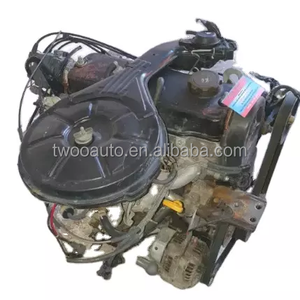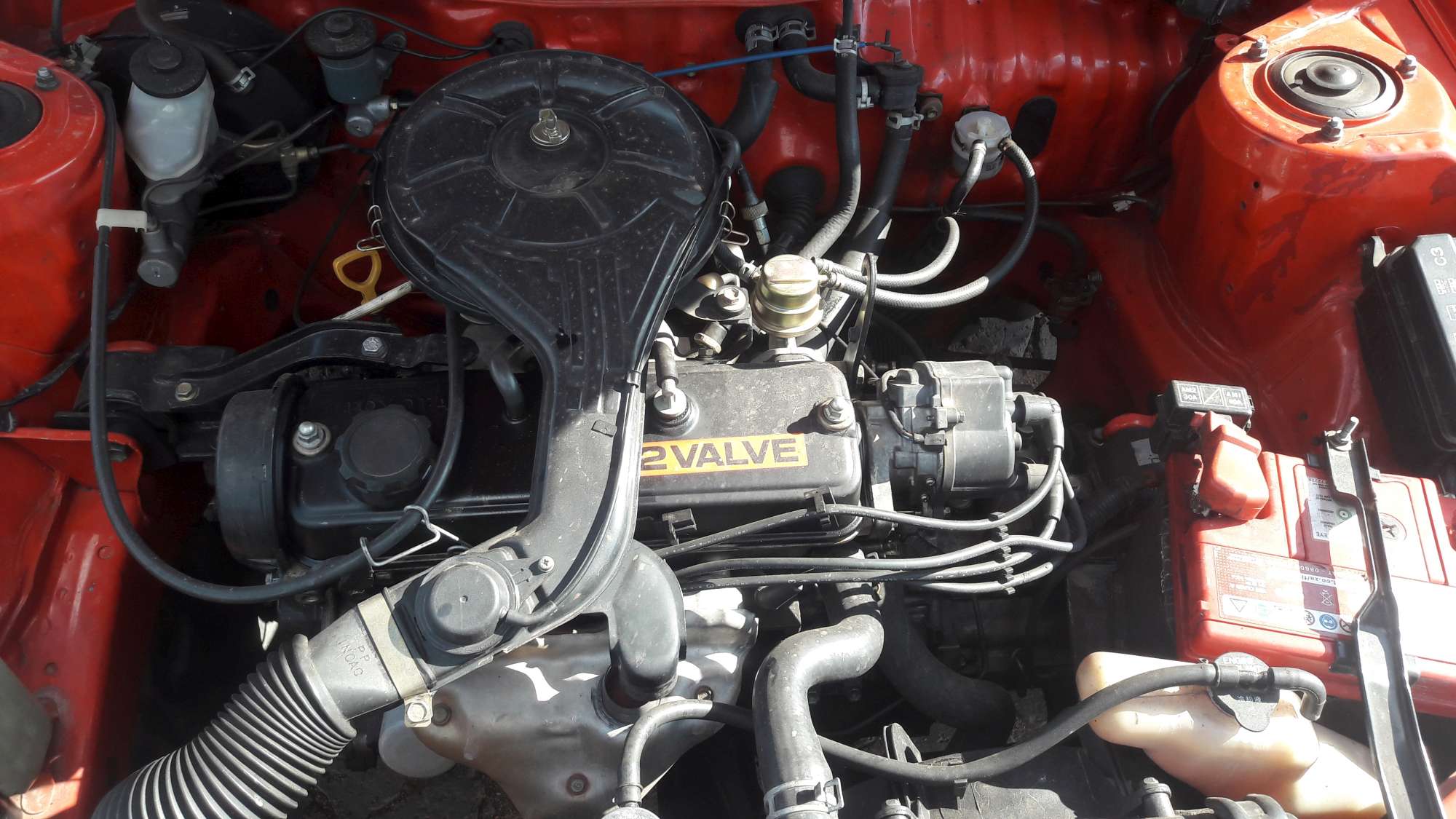Toyota Tazz: The Compact Car That Delivers on Reliability and Fuel Efficiency
Toyota Tazz: The Compact Car That Delivers on Reliability and Fuel Efficiency
Blog Article
Check Out the most up to date Trends in Engine Technology Through Tazz
In the quickly advancing landscape of vehicle modern technology, Tazz stands at the leading edge, highlighting considerable developments in engine systems that focus on both technology and sustainability. From hybrid engines that maximize fuel effectiveness to the emergence of hydrogen fuel cells, the patterns shaping contemporary powertrains are not just boosting efficiency but additionally resolving important environmental obstacles.
Hybrid Engine Innovations
Hybrid engine technologies represent a crucial change in automotive modern technology, integrating the advantages of interior burning engines with electric propulsion systems. This assimilation not only boosts fuel performance however additionally decreases exhausts, meeting significantly strict ecological policies. By making use of both energy resources, hybrid engines can maximize performance, supplying power when needed while saving gas during much less requiring driving conditions.
Current developments in crossbreed modern technology include enhancements in battery efficiency and regenerative braking systems. These advancements allow for higher power recovery during slowdown, which can be rerouted to aid in acceleration or power auxiliary systems. Producers are focusing on compact designs and lightweight materials to optimize the performance of crossbreed powertrains.
The development of plug-in hybrids has also expanded the market, allowing motorists to charge their lorries using basic electrical outlets. This feature frequently permits considerable all-electric range, further decreasing dependence on traditional fuels. tazz. As the automotive industry proceeds to advance, hybrid engine modern technologies are anticipated to play an essential role in bridging the void between conventional vehicles and totally electric designs, offering a transitional solution that satisfies varied customer needs and preferences
Advances in Electric Powertrains
The automobile landscape is quickly advancing, with electrical powertrains emerging as a leading force in lasting transportation. Advancements in electric lorry (EV) innovation are considerably enhancing performance, performance, and user experience. Trick advancements include renovations in battery chemistry, which have raised energy thickness, decreased billing times, and prolonged total battery life.
Solid-state batteries, as an example, assure to reinvent the market by supplying greater security and efficiency compared to typical lithium-ion cells. Developments in regenerative stopping systems are enabling automobiles to recoup energy throughout slowdown, contributing to general performance.
In enhancement to battery innovation, electrical motor layouts are becoming much more advanced. Technologies such as integrated motors and advanced thermal administration systems are aiding to optimize power delivery and decrease weight, eventually boosting lorry characteristics.

Jointly, these developments highlight the commitment to transition towards cleaner, more efficient transport options, placing electric powertrains at the forefront of automotive innovation.
The Surge of Hydrogen Gas Cells
Progressively, hydrogen fuel cells are gaining traction as a sensible choice to standard internal combustion engines and battery electrical automobiles. This innovation utilizes the chemical power kept in hydrogen, converting it right into electrical energy with an electrochemical response with oxygen. The main byproduct of this procedure is water, making hydrogen fuel cells an eco-friendly choice with absolutely no exhausts at the tailpipe.

Car manufacturers are increasingly purchasing hydrogen fuel cell innovation, acknowledging its possibility for long-range applications and quick refueling capabilities that rival traditional gas. In addition, fields such as heavy-duty transport and public transit are particularly well-suited for hydrogen fuel cells, where battery electric services may fail due to weight and variety restrictions.
As research study and investment remain to expand, hydrogen fuel cells are poised to play a significant role in the future landscape of clean transport and power remedies.
Enhancements in Internal Burning Engines
Technologies in inner burning engine (ICE) innovation are transforming conventional cars to meet modern ecological criteria and efficiency expectations. One of the most substantial improvements includes the integration of advanced gas shot systems. These systems enhance the air-fuel mixture, improving burning effectiveness and resulting in reduced exhausts. Straight fuel shot, for example, permits better atomization of gas, causing more full burning and enhanced power result.
Furthermore, turbocharging has actually gotten prominence, enabling smaller engines to supply higher efficiency without the weight of larger engines - tazz. This innovation not just improves efficiency however also contributes to decrease fuel intake. Variable valve timing systems are additionally being refined, making it possible for engines to adapt to different driving problems for improved torque and responsiveness
Additionally, the use of light-weight products in engine construction is coming to be basic, more enhancing fuel performance by reducing general lorry weight. Engine control units (ECUs) are progressively innovative, enabling real-time modifications that maximize performance and emissions.
These improvements jointly signify a critical change in ICE modern technology, aligning with worldwide sustainability goals while still supplying the efficiency motorists anticipate from their vehicles. As the industry develops, these enhancements remain to form the future of typical automotive engineering.
Future Fads in Engine Efficiency
Significant developments in engine effectiveness are expected as makers concentrate on incorporating sophisticated modern technologies visite site to fulfill stringent ecological regulations and customer needs. The change in the direction of electrification, crossbreed systems, and alternate gas is reshaping the automobile landscape, driving developments that improve fuel economy and decrease emissions.
One of the vital fads is informative post the execution of innovative products and manufacturing methods. High-strength alloys and lightweight composites add to reduced lorry weight, hence enhancing general efficiency. Additionally, the fostering of turbocharging and variable shutoff timing innovations enables boosted power outcome from smaller engines, further boosting gas economy.

Verdict
Innovations in hybrid engine systems, electric powertrains, and hydrogen fuel cells demonstrate a dedication to lowering exhausts while enhancing performance. Improvements in internal combustion engines and a focus on light-weight products add to total engine performance.
From crossbreed engines that maximize gas efficiency to the development of hydrogen fuel cells, the patterns forming contemporary powertrains are not just boosting performance but also addressing crucial environmental challenges.Crossbreed engine innovations stand for a crucial change in auto modern technology, incorporating the advantages of interior combustion engines with electric propulsion systems.In addition, turbocharging has actually gotten importance, enabling smaller engines to supply greater efficiency without the weight of larger engines. Additionally, the fostering of turbocharging and variable shutoff timing innovations allows for improved power result from smaller sized engines, additionally improving fuel economic visit this website situation.
Renovations in interior burning engines and a focus on lightweight products add to general engine efficiency.
Report this page